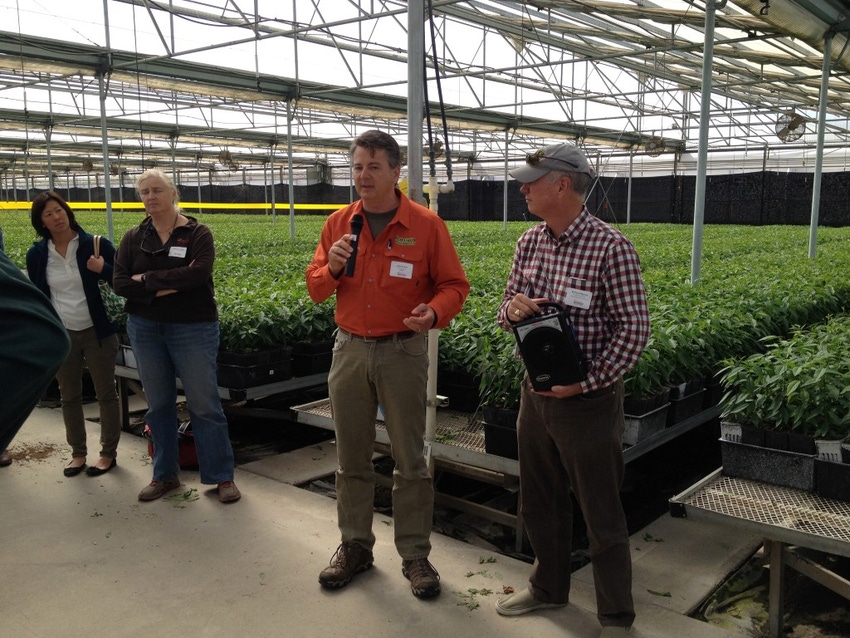June 15, 2017

(Note: the 2017 Almond Board of California’s Environmental Stewardship Tour was held at Duarte Nursery, Inc. in Stanislaus County where government regulators and officials received an inside look at almond production).
Duarte Nursery was pleased to recently host the Almond Board’s Environmental Stewardship Tour at our nursery facility and a newly-planted family orchard. Taking policymakers and influencers through real agricultural operations and demonstrating the agricultural industry’s commitment to sustainability will benefit growers throughout California.
During the tour, we demonstrated sustainable nursery tree production systems that produce almond trees in more sustainable and ecologically friendly ways than ever before. New almond rootstock genetics are helping growers prepare for water scarcity in the future.
Salt tolerance allows for using lower quality water when surface water deliveries are curtailed. Wet soil-tolerant rootstocks allow almond production where there is an abundance of water.
We are very proud of our state-of-the-art Dry Creek Labs, overseen by Duarte Nursery’s research director Javier Castillon. The lab’s clean rooms are a perfect environment for clonally propagating rootstock from tissue culture. With clonal rootstocks, there is increased uniformity; higher disease resistance; larger, more vigorous trees; and higher yields.
Irrigation advances
Also discussed were state-of-the-art irrigation efficencies demonstrated by Waterford Irrigation. Ron Nydam of Waterford discussed soil preparation for a nearby newly-planted almond orchard. He discussed the importance of irrigation design and installation based on soil type, water availability, plus water frequency and delivery.
While a drip system may be more water-use efficient, Nydam said in many soils that micro sprinklers are a better choice for water penetration.
To ensure optimal irrigation, soil moisture monitors gauge the amount of water required to accelerate growth. Various software applications allow grower access to real-time data on smartphones and computers which help keep trees hydrated while reducing stress.
Deep compost incorporation
The group saw the company Ag Soilworks perform deep compost incorporation directly down the tree row. With this wing shank-ripping technology, growers can apply organic matter in almond fields, incorporating the matter close the root areas of new trees.
University of California, Davis specialists discussed state-of-the-art genetic research on rootstock for new almond orchards. The most cost effective and sustainable method for dealing with many orchard challenges is through improved genetics which provides resistance and adaptability at the plant level.
Another valuable part of the tour was the interaction between industry members and regulators and government officials during lunch. Face-to-face conversations put a face to a name, and created a better understanding of the complexity of almond production.
This one-on-one engagement paves the road for improved long-term relationships as the almond industry works with the private sector, USDA, UC, and others to conduct scientific research to find answers to environmental challenges.
Duarte Nursey is proud to have been part of this collaborative research effort, and seeking innovative solutions to the almond industry’s environmental challenges.
About the Author(s)
You May Also Like




